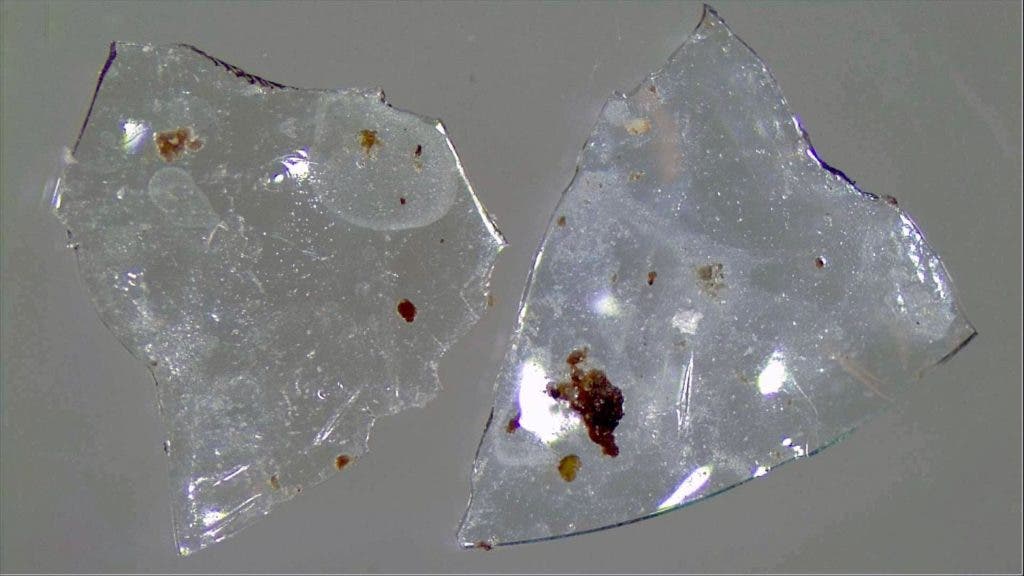Just throw them in the trash if you don’t want them on your plate later on.

Image credits Charles Rolsky.
Unlike glasses, contact lenses are intended for very short usage periods — most are meant to last a single day. Their disposability may have dire consequences for our oceans, however, according to new research. The paper reports that throwing contact lenses down the drain after use may contribute to microplastic pollution.
The researchers are presenting their results today (Monday 20th August) at the 256th National Meeting & Exposition of the American Chemical Society (ACS) in Boston, Mass.
Break-down lenses
Rolf Halden, Ph.D. and paper lead author, says the work was borne of personal experience.
“I had worn glasses and contact lenses for most of my adult life,” Rolf explains. “But I started to wonder, has anyone done research on what happens to these plastic lenses?”
Rolf’s team — which was already involved in plastic pollution research — couldn’t find a single study detailing what happens to these lenses after use. So they decided to research the topic themselves.
They started with a survey aimed at contact lens wearers in the U.S. It revealed that between 15 to 20% of all users flush the lenses down the sink or toilet after use. Considering that roughly 45 million people in the U.S. alone wear such lenses, that’s a lot of people.
Lenses disposed of in this way end up in wastewater treatment plants — between 6 to 10 metric tons of plastic lenses suffer this fate each year in the U.S. alone, the team estimates. As they tend to be denser than water, these lenses sink. This could ultimately pose a threat to aquatic life, especially bottom feeders that may ingest the contacts.
Direct observation of what happens to these lenses in a wastewater treatment plant was a challenge for several reasons. First off, they’re transparent — making them exceedingly hard to track in wastewater. Secondly, contact lenses are made of a special kind of plastic. Unlike other plastic waste (which is largely composed of polypropylene), contact lenses are usually made from a combination of poly(methylmethacrylate), silicones, and fluoropolymers. This material is much softer and permeable to oxygen. However, its behavior in wastewater and wastewater treatment plants was undocumented.
As part of their research, the team exposed five polymer blends found in the majority of lenses to populations of aerobic and anaerobic microorganisms from wastewater treatment plants. Samples of each polymer were exposed to wastewater for varying lengths of time, and finally performed Raman spectroscopy to analyze the material.
The team concluded that microbes in the wastewater treatment facility actually altered the surface of the contact lenses, weakening the bonds in the plastic polymers.
“We found that there were noticeable changes in the bonds of the contact lenses after long-term treatment with the plant’s microbes,” says coauthor Varun Kelkar.
“When the plastic loses some of its structural strength, it will break down physically. This leads to smaller plastic particles which would ultimately lead to the formation of microplastics.”
Marine animals often mistake microplastics for bits of food. Since plastic isn’t digestible, however, these microplastics have a severe effect on the animals’ digestive systems. Since oceans support complex food chains, microplastics can pass from the small fry to larger fish and eventually end up on your plate (or in your glass). Contact lenses could thus lead to unwanted exposures to plastic contaminants and the pollutants that stick to their surfaces.
This is the first research looking into the effects of contact lenses in wild ecosystems, the team notes. They hope their work will determine industry to at least provide labels on the lenses’ packages describing how to properly dispose of the devices — placing them alongside other solid waste.
“Ultimately, we hope that manufacturers will conduct more research on how the lenses impact aquatic life and how fast the lenses degrade in a marine environment,” Halden confesses.
The findings will be presented at the 256th National Meeting & Exposition of the American Chemical Society. You can watch it live here.






